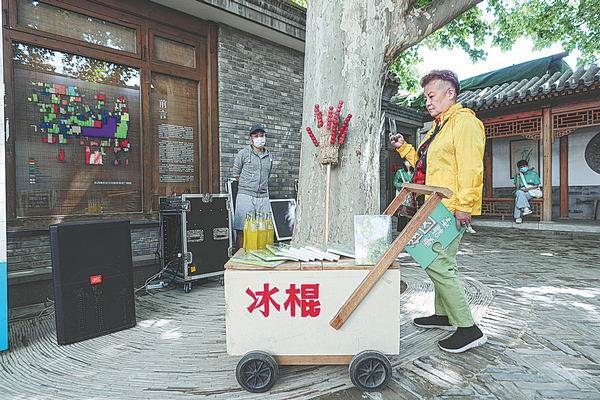

Earlier last month, I attended a fascinating talk about the disappearing sounds of the hutong, auditory artifacts like the song of candied hawthorn vendors, the jingle of camel coal trains, the blind fortune-teller and his one-handed tongdian gong, and the ethereal, theremin-like sound of the pigeon whistle.
Together, the speaker said, these sounds were part of a distinct, and distinctive, daily soundtrack. That was equally fascinating. Apart from the occasional horn, a snatch of music or raised voice, Beijing's crowded hutong neighborhoods have always struck me as almost preternaturally quiet, especially given their location.
But as our host, Colin Siyuan Chinnery explained, that silence is engineered. Sound travels in a straight line and with their high walls and narrow streets laid out in anything but straight lines, a hutong is designed to keep city noise out-although I'm reliably informed that individual houses are rather less successful at keeping the sound of immediate neighbors at bay.
The loss of such a soundtrack would probably strike harder had I ever experienced it for myself. Alas, in my time in Beijing, which has included stints in a hermetically-sealed rooftop apartment in deepest Fengtai district, so soundproof, I could have slept through Armageddon, a couple of months in a womb-like apartment block off Gongti Beilu and now the China Daily residences, the only characteristic sounds I've ever noticed have been those made by upstairs neighbors.
But then most Beijing ren (people) have not noticed the loss either, as many of the most distinctive sounds, particularly the songs of the vendors, began to die out in the 1950s, when New China phased out peddling on the grounds that the age-old profession might have certain nostalgic appeal, but there was nothing romantic about the grinding poverty peddlers endured.
As usual, it is only when looking back that one remembers what is gone, like the ghajar (Arabic for gypsy) performers at Easter, or the cries of the roving scrap metal merchants, knife sharpeners and vendors of warm, crispy, crunchy kaak bread that my older neighbors in Beirut lamented, for sound, like smell, is a thing of memory.
Chinnery, who views old Beijing's soundscape as uniquely rich-partially by dint of its once extensive class of wealthy idlers who could afford esoteric pastimes like training skylarks to imitate a water cart running over a dog's tail (I kid you not)-is co-founder of UCCA and the man behind the sound installation at the Shijia Hutong Museum, which occupies his former family home. With over 30 years of recordings, he is opening a larger museum later this year complete, of course, with its own flock of whistling pigeons.
Miss the jingle tax meters used to play or the grating chirp of guoguo (green katydid)? Ever wonder what the Bell Tower's bell sounded like when it was rung 108 times on the hour? Chinnery has them all on tape.
Contact the writer at warren@chinadaily.com.cn
